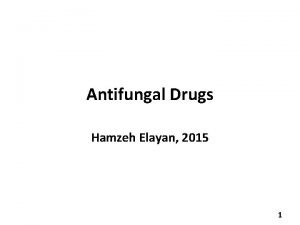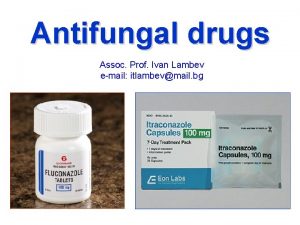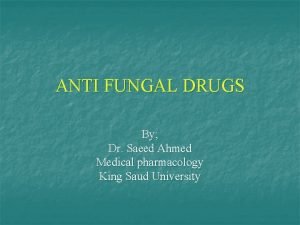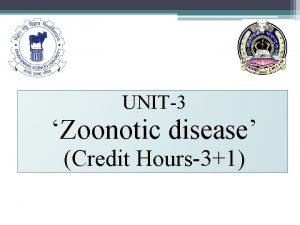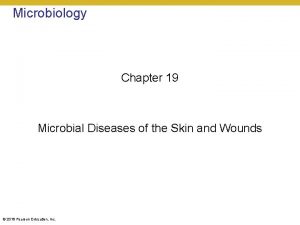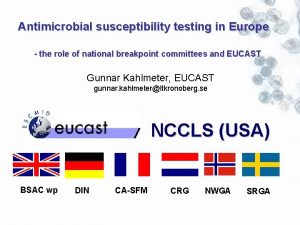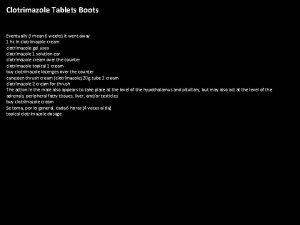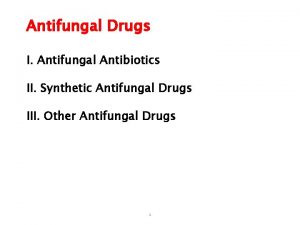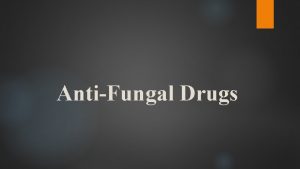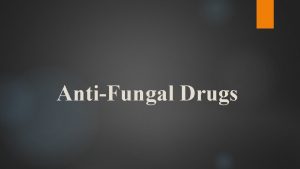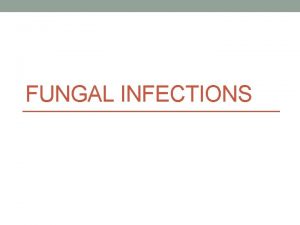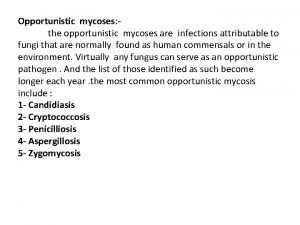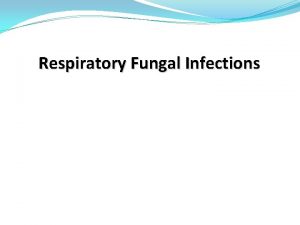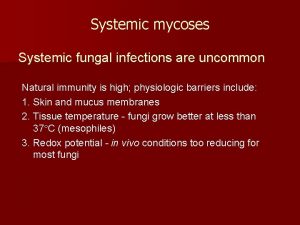Antifungal Drugs Fungal infections Mycoses Often chronic in










- Slides: 10

Antifungal Drugs • Fungal infections (Mycoses) • Often chronic in nature. • Mycotic infections may be superficial and involve only the skin (cutaneous mycoses extending into the epidermis) • Others may penetrate the skin, causing subcutaneous or systemic infections. • The characteristics of fungi are so unique and diverse that they are classified in their own kingdom.

• fungi are eukaryotic • with rigid cell walls composed largely of chitin rather than peptidoglycan (a characteristic component of most bacterial cell walls). • the fungal cell membrane contains ergosterol rather than the cholesterol found in mammalian membranes. • These structural characteristics are useful in targeting chemotherapeutic agents against fungal infections. • Fungal infections are generally resistant to antibiotics.

• Bacteria are resistant to antifungal agents. • The incidence of fungal infections such as candidemia has been on the rise for the last few decades. Ø Increased number of patients with chronic immune suppression due to organ transplantation Ø Cancer chemotherapy Ø Infection with human immunodeficiency virus (HIV). • New therapeutic options have become available

Cellular Targets of Antifungal Drugs

Drugs For Subcutaneous and Systemic Mycotic Infections q. Amphotericin B • Naturally occurring polyene antifungal produced by Streptomyces nodosus. • In spite of its toxic potential, amphotericin B remains the drug of choice for the treatment of several life-threatening mycoses. • Mechanism of action: Amphotericin B binds to ergosterol in the plasma membranes of sensitive fungal cells. • It forms pores (channels) that require hydrophobic interactions between the lipophilic segment of the polyene antifungal and the sterol

Mechanism of Action

Antifungal spectrum • Amphotericin B is either fungicidal or fungistatic depending on the organism and the concentration of the drug. • It is effective against a wide range of fungi, including Candida albicans, Histoplasma capsulatum, Cryptococcus neoformans, Coccidioides immitis, Blastomyces dermatitidis, and many strains of Aspergillus. • Resistance: Fungal resistance, although infrequent, is associated with decreased ergosterol content of the fungal membrane.

• Amphotericin B is administered by slow, intravenous IV) infusion. • Amphotericin B is insoluble in water and must be coformulated with either sodium deoxycholate (conventional) or a variety of artificial lipids to form liposomes. • The liposomal preparations have the primary advantage of reduced renal and infusion toxicity. • high cost, liposomal preparations are reserved mainly as salvage therapy for patients who cannot tolerate conventional amphotericin B. • Amphotericin B is extensively bound to plasma proteins and is distributed throughout the body. • Dosage adjustment is not required in patients with hepatic dysfunction, but when conventional amphotericin B causes renal dysfunction, the total daily dose is decreased by 50%. • Amphotericin B has a low therapeutic index.


Adverse Effects
